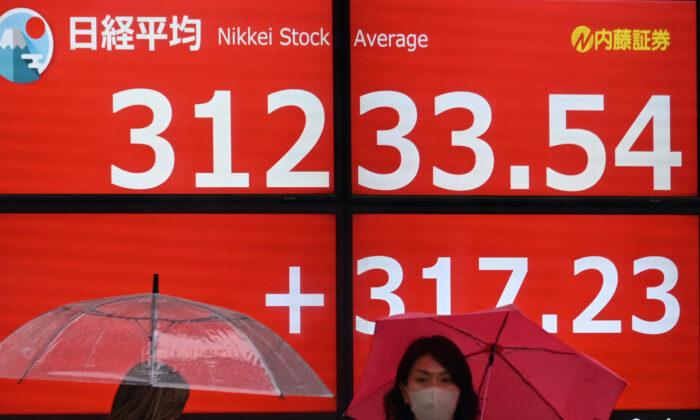Japan appears to be a reemerging star in Asia. Market focus is two-fold, Japan’s stock market performed brightly, and the Bank of Japan might turn monetary policy from easing to tightening. Behind these, Japan’s old problems are still there. Population is still on a downtrend and is actually decreasing faster than before. Another famous problem is the government’s gross debt-to-GDP ratio, which is still on an uptrend albeit at a steady accelerating pace. Culturally, corporate inefficiency and the glass ceiling are still there and do not show much improvement.
Although the Nikkei 225 index quadrupled over the past twelve years, it is still one step behind the 1990 peak. If compared to 1990, even as poor as the Hong Kong stock market is (as measured by the Hang Seng Index), it is still five-fold of that time at 3,000 points; now, it is hovering at 16,000. From a broader perspective, Japan’s stock market is mainly exhibiting a base effect, which was too high in 1990 and too low in 2008. Another key reason is, of course, the fleeing of businesses and financial assets from China and Hong Kong to many surrounding countries.
Such a massive relocation could last for some years but seldom over a decade or two. When Hong Kong replaced Tokyo as an international financial centre around the 1980s to 1990s, the exact outstanding period with the brightest stock market performance was from 1987 to 1997. The period from 1997 to 2007 was much bumpier in the second half of the secular uptrend. Japan’s stock market had bottomed out in 2008 and began to boom from 2012. If the same timeframe repeats, then Japan is probably entering the second half of such an inflowing episode.
As capital has been accumulating where undershoot (or oversold) has been corrected, people would question why there will be more upside to come. The reasoning for further flow will no longer be a base effect but something fundamental, either micro or macro. On the micro, Japan has been famous for robotics (including AI) and finance in the past. Further development is questionable, however, against the backdrop of a weak macro. Specifically, this requires an energetic environment with high efficiency and an internationalized culture that Japan lacks.
Consistently, Japan’s GDP growth remains at the same trend level, even with a perceived re-emergence. New investment is needed to drive up the number. Yet what has happened so far is low-interest rates leading to a weak Yen, in turn boosting carry trade in shorting Yen and longing Japanese stocks. These are regarded as short-term financial flows more than long-term investments. Without higher GDP growth, CPI growth will also remain low, as seen from the past half century’s experience in the accompanying chart. It seems inflation will revert down to 2 percent.

Japan has been dreaming of inflation for decades. This has now been achieved, but this does not imply real fundamental improvement because the price level is more of a consequence than a cause. Demographic and institutional factors are the key to further development, which are yet to be seen.







